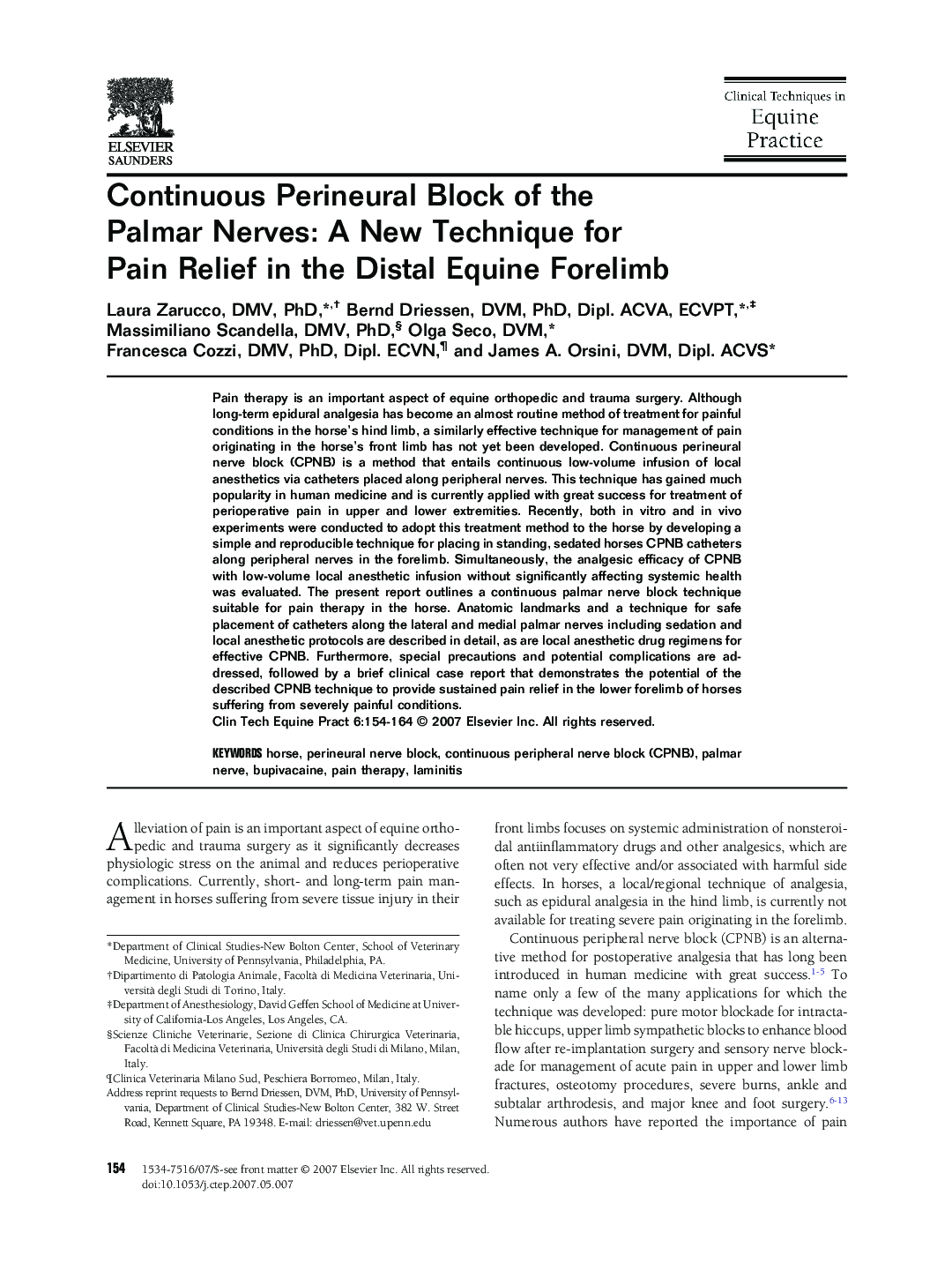| Article ID | Journal | Published Year | Pages | File Type |
|---|---|---|---|---|
| 2393211 | Clinical Techniques in Equine Practice | 2007 | 11 Pages |
Pain therapy is an important aspect of equine orthopedic and trauma surgery. Although long-term epidural analgesia has become an almost routine method of treatment for painful conditions in the horse’s hind limb, a similarly effective technique for management of pain originating in the horse’s front limb has not yet been developed. Continuous perineural nerve block (CPNB) is a method that entails continuous low-volume infusion of local anesthetics via catheters placed along peripheral nerves. This technique has gained much popularity in human medicine and is currently applied with great success for treatment of perioperative pain in upper and lower extremities. Recently, both in vitro and in vivo experiments were conducted to adopt this treatment method to the horse by developing a simple and reproducible technique for placing in standing, sedated horses CPNB catheters along peripheral nerves in the forelimb. Simultaneously, the analgesic efficacy of CPNB with low-volume local anesthetic infusion without significantly affecting systemic health was evaluated. The present report outlines a continuous palmar nerve block technique suitable for pain therapy in the horse. Anatomic landmarks and a technique for safe placement of catheters along the lateral and medial palmar nerves including sedation and local anesthetic protocols are described in detail, as are local anesthetic drug regimens for effective CPNB. Furthermore, special precautions and potential complications are addressed, followed by a brief clinical case report that demonstrates the potential of the described CPNB technique to provide sustained pain relief in the lower forelimb of horses suffering from severely painful conditions.
